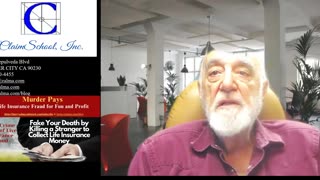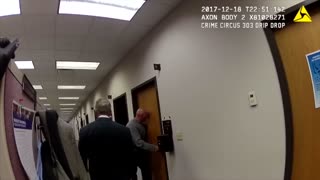A Video Explaining Common Tactics Used to Set Up a Bad Faith Claim Unlisted Video
Bad Faith Set-Ups Defeat the Purpose of the Tort of Bad Faith
One tactic for setting up a bad faith claim is to make a settlement offer that likely cannot be complied with by the insurer. Knowing the settlement demands may not be met, the insured/claimant waits for the insurer’s misstep, then asserts a bad faith claim.
Sometimes the insured/claimant will make an offer for settlement containing an arbitrary and unrealistic deadline for acceptance, before the insurer has had the opportunity to fully investigate the claim. When the insurer is unwilling to agree immediately to the insured’s/claimant’s demands, a bad faith claim is filed.
For example, in DeLaune v. Liberty Mut. Ins. Co., 314 So. 2d 601 (Fla. 4th DCA. 1975), plaintiffs made an offer to settle their claim stemming from an automobile accident for the $10,000 policy limit, attaching a 10-day deadline for the defense to accept the offer. Defense counsel, believing that settlement for the policy limits was possible, but not yet authorized to approve the settlement, contacted the plaintiffs’ counsel on the last day of the deadline and asked for an extension of the offer until the following Monday after the Friday deadline. The plaintiffs refused and initiated a common law bad faith action for the excess judgment.
These developments have resulted in the bad faith landscape in some jurisdictions appearing geared more closely to providing policyholder counsel with a lucrative recovery than safeguarding the appropriate balance of interests between insurer and insured.
Bad faith cases that are manufactured to avoid a settlement expand the concept of “bad faith” beyond what the case law and statutes require for “good faith.” An offer of settlement made only for the purpose of setting up a bad faith lawsuit is the obverse of the requirement that insurers act fairly and in good faith. Ultimately, bad faith claims have become so common that the stringent standard actually needed to prove the tort of bad faith appears to have been ignored and bad faith claims allowed based on mere technical failures in reaching a settlement.
© 2021 – Barry Zalma
Barry Zalma, Esq., CFE, now limits his practice to service as an insurance consultant specializing in insurance coverage, insurance claims handling, insurance bad faith and insurance fraud almost
equally for insurers and policyholders. He also serves as an arbitrator or mediator for insurance related disputes. He practiced law in California for more than 44 years as an insurance coverage and claims handling lawyer and more than 52 years in the insurance business. He is available at http://www.zalma.com and zalma@zalma.com.
Mr. Zalma is the first recipient of the first annual Claims Magazine/ACE Legend Award.
Over the last 53 years Barry Zalma has dedicated his life to insurance, insurance claims and the need to defeat insurance fraud. He has created the following library of books and other materials to make it possible for insurers and their claims staff to become insurance claims professionals.
Go to the podcast Zalma On Insurance at https://anchor.fm/barry-zalma; Follow Mr. Zalma on Twitter at https://twitter.com/bzalma; Go to Barry Zalma videos at Rumble.com at https://rumble.com/c/c-262921; Go to Barry Zalma on YouTube- https://www.youtube.com/channel/UCysiZklEtxZsSF9DfC0Expg; Go to the Insurance Claims Library – https://zalma.com/blog/insurance-claims-library/ Read posts from Barry Zalma at https://parler.com/profile/Zalma/posts; and the last two issues of ZIFL at https://zalma.com/zalmas-insurance-fraud-letter-2/ podcast now available at https://podcasts.apple.com/us/podcast/zalma-on-insurance/id1509583809?uo=4
-
 13:02
13:02
Barry Zalma, Inc. on Insurance Law
3 months agoMurder Pays
2431 -
 12:03
12:03
ThinkStory
15 hours ago64 MAJOR Differences Between SHOGUN (1980) and SHOGUN (2024)
24.4K18 -
 26:37
26:37
TheTapeLibrary
17 hours agoAnatoly Moskvin | Horrifying Crimes of The Russian Puppeteer
30.9K26 -
 6:16
6:16
Film Threat
11 hours agoDEADPOOL & WOLVERINE TRAILER REACTION | Film Threat Reviews
24.4K14 -
 29:36
29:36
Science & Futurism with Isaac Arthur
17 hours agoClearing Space Debris
27.9K12 -
 6:55
6:55
Chrissy Clark
7 hours agoLGBT Activists Want Katy Perry To Stop THIS?!
23.6K19 -
 16:27
16:27
justintech
11 hours agoBest Gaming PC 2024 For Every Budget!
25.9K2 -
 1:22:40
1:22:40
Crime Circus
12 hours agoBad Boy sneaks KNIFE into interrogation!!
30.6K6 -
 2:06:10
2:06:10
Laura Loomer
6 hours agoEP44: TRUMP ON TRIAL: SCOTUS Hears Presidential Immunity Arguments Ahead of 2024 Election
39.5K38 -
 3:04:11
3:04:11
Melonie Mac
6 hours agoGo Boom Live Ep 1: Stellar Blade and More!
27.8K14